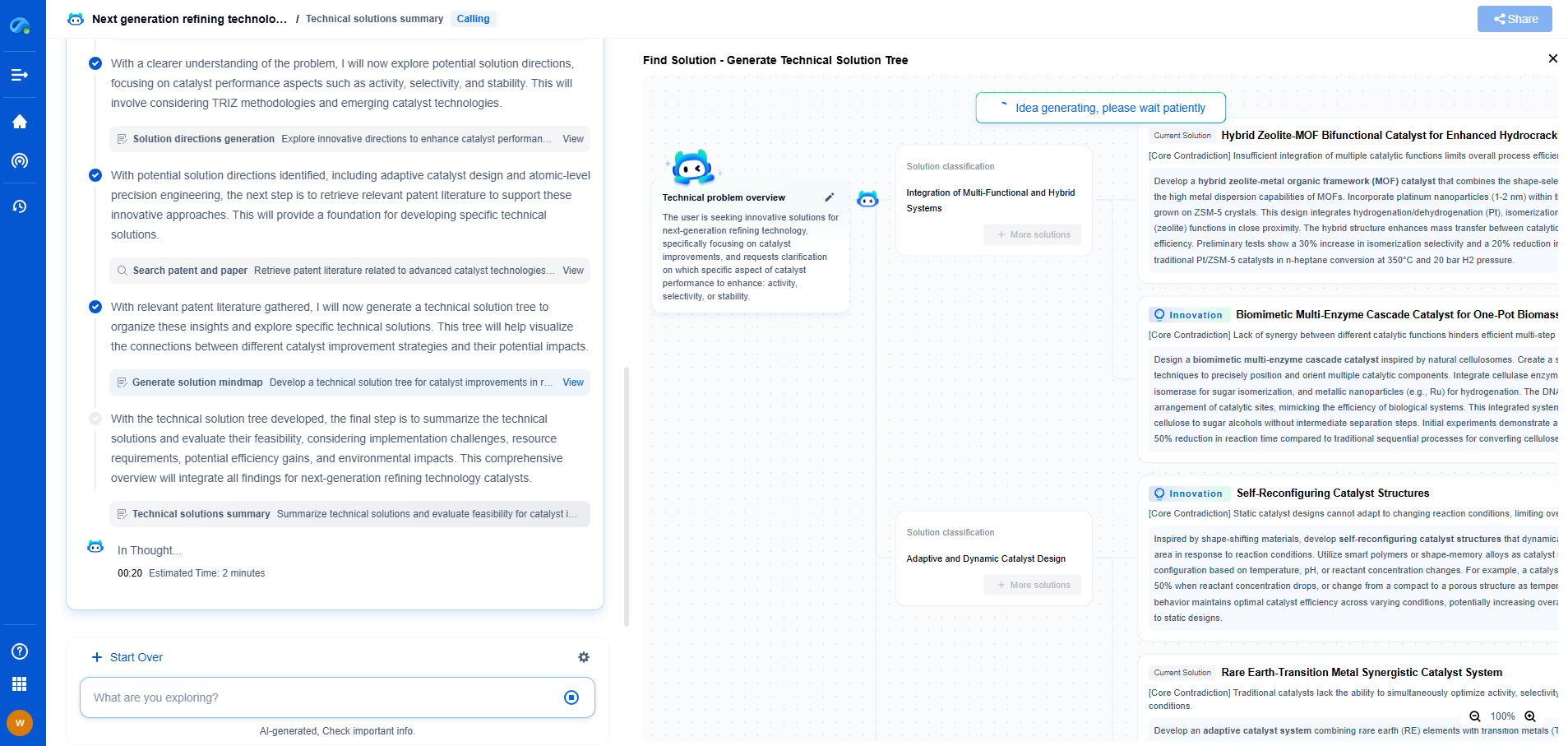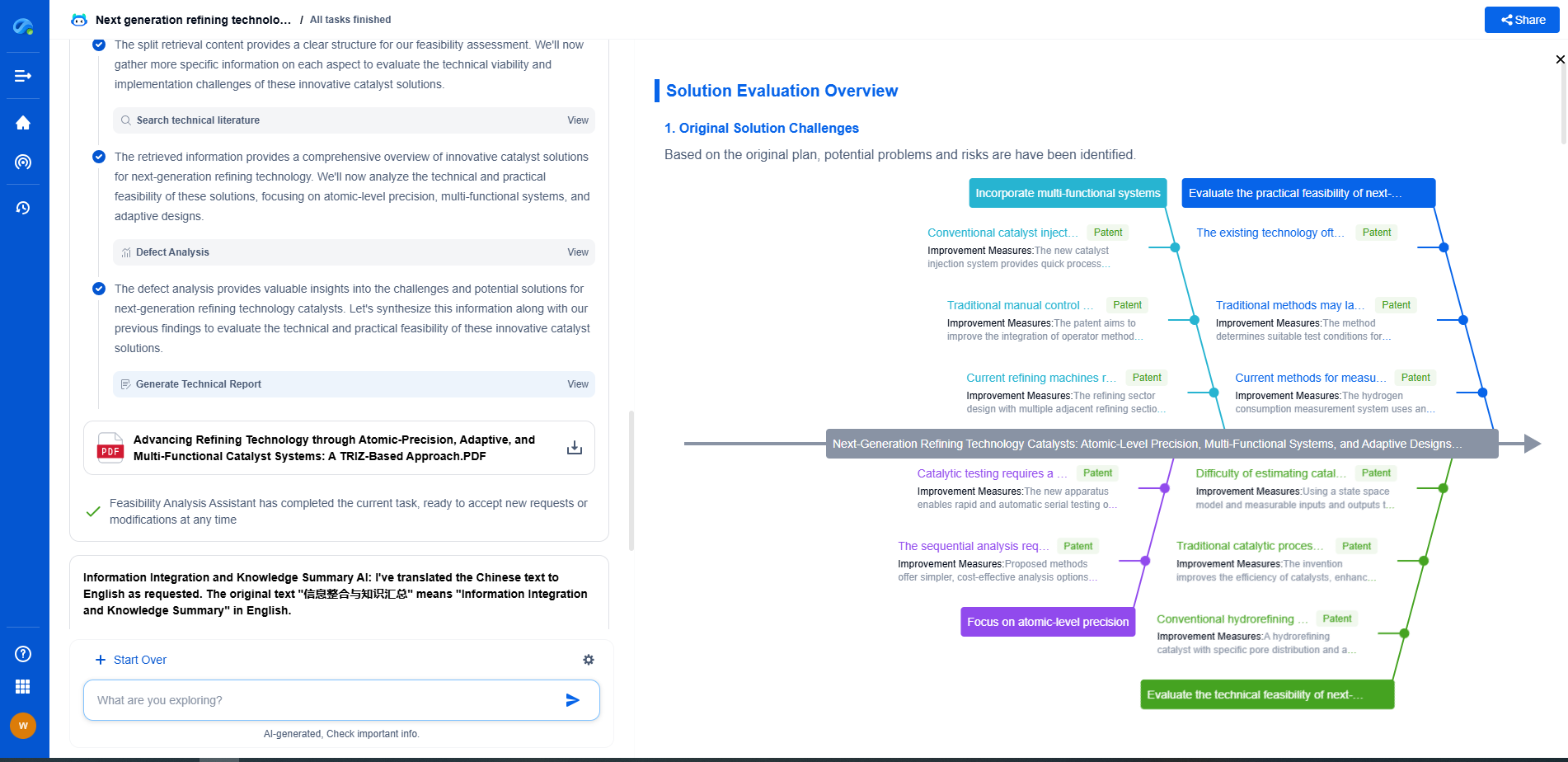How Does Machine Learning Improve Power Grid Efficiency?
JUN 26, 2025 |
In an era marked by a growing demand for sustainable energy solutions, the efficiency of power grids has become more crucial than ever. Machine learning, a subset of artificial intelligence, offers promising avenues for enhancing the performance, reliability, and efficiency of power grids. This article delves into how machine learning is revolutionizing the management and operation of power grids, ensuring they meet the modern world's energy demands.
Predictive Maintenance and Fault Detection
One of the standout applications of machine learning in power grid management is predictive maintenance. Power grids are composed of a vast array of components, including transformers, circuit breakers, and transmission lines, all of which require regular maintenance to function optimally. Machine learning algorithms can analyze historical data to predict when a component is likely to fail, allowing for timely maintenance. This predictive capability helps reduce unexpected outages and maintenance costs, enhancing overall grid reliability and efficiency.
Optimizing Energy Distribution
Machine learning can significantly improve the distribution of energy across the power grid. Traditional methods often rely on static models that don't account for real-time fluctuations in supply and demand. Machine learning algorithms, however, can process large volumes of data from smart meters, weather forecasts, and historical consumption patterns to optimize the distribution of electricity. This ensures that energy is distributed efficiently, reducing waste and accommodating peak demand without overloading the grid.
Enhancing Demand Response
Demand response is a critical aspect of modern power grid management, involving adjusting the demand for power instead of adjusting the supply. Machine learning can enhance demand response strategies by accurately predicting energy consumption patterns and identifying opportunities to shift or reduce demand during peak periods. By doing so, machine learning helps balance the load on the grid, preventing overloads and reducing the need for expensive peaking power plants.
Integrating Renewable Energy Sources
The integration of renewable energy sources like wind and solar into the power grid presents both opportunities and challenges. The intermittent and unpredictable nature of these energy sources can lead to instability if not managed properly. Machine learning algorithms can forecast the output from renewable sources by analyzing data such as weather conditions and historical production levels. These predictions enable grid operators to better integrate renewable energy into the grid, ensuring a stable and reliable power supply while maximizing the use of clean energy.
Enhancing Grid Security
As power grids become more digitized, they also become more vulnerable to cyber threats. Machine learning can play a pivotal role in enhancing grid security by detecting anomalies and potential security breaches in real-time. By continuously monitoring grid operations and identifying patterns indicative of cyber-attacks, machine learning helps safeguard the grid against potential threats, ensuring uninterrupted power supply and protecting critical infrastructure.
Conclusion
Machine learning is proving to be a transformative force in improving power grid efficiency. From predictive maintenance and optimizing energy distribution to enhancing demand response and integrating renewable energy sources, machine learning offers solutions that help power grids operate more efficiently, reliably, and securely. As technology continues to advance, the role of machine learning in power grid management is poised to grow, paving the way for a more sustainable and efficient energy future.
Stay Ahead in Power Systems Innovation
From intelligent microgrids and energy storage integration to dynamic load balancing and DC-DC converter optimization, the power supply systems domain is rapidly evolving to meet the demands of electrification, decarbonization, and energy resilience.
In such a high-stakes environment, how can your R&D and patent strategy keep up?
Patsnap Eureka, our intelligent AI assistant built for R&D professionals in high-tech sectors, empowers you with real-time expert-level analysis, technology roadmap exploration, and strategic mapping of core patents—all within a seamless, user-friendly interface.
👉 Experience how Patsnap Eureka can supercharge your workflow in power systems R&D and IP analysis. Request a live demo or start your trial today.
- R&D
- Intellectual Property
- Life Sciences
- Materials
- Tech Scout
- Unparalleled Data Quality
- Higher Quality Content
- 60% Fewer Hallucinations
Browse by: Latest US Patents, China's latest patents, Technical Efficacy Thesaurus, Application Domain, Technology Topic, Popular Technical Reports.
© 2025 PatSnap. All rights reserved.Legal|Privacy policy|Modern Slavery Act Transparency Statement|Sitemap|About US| Contact US: help@patsnap.com

